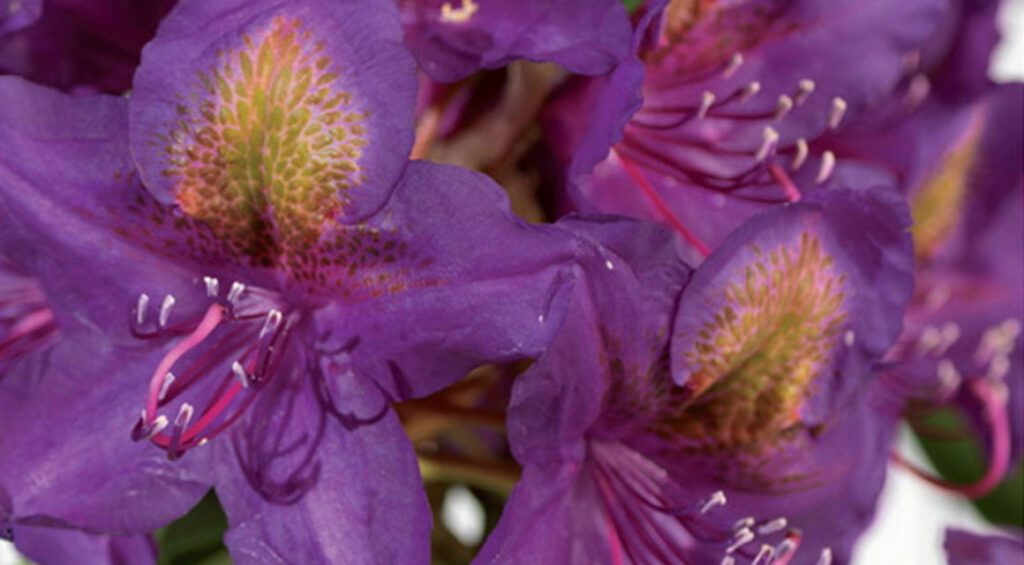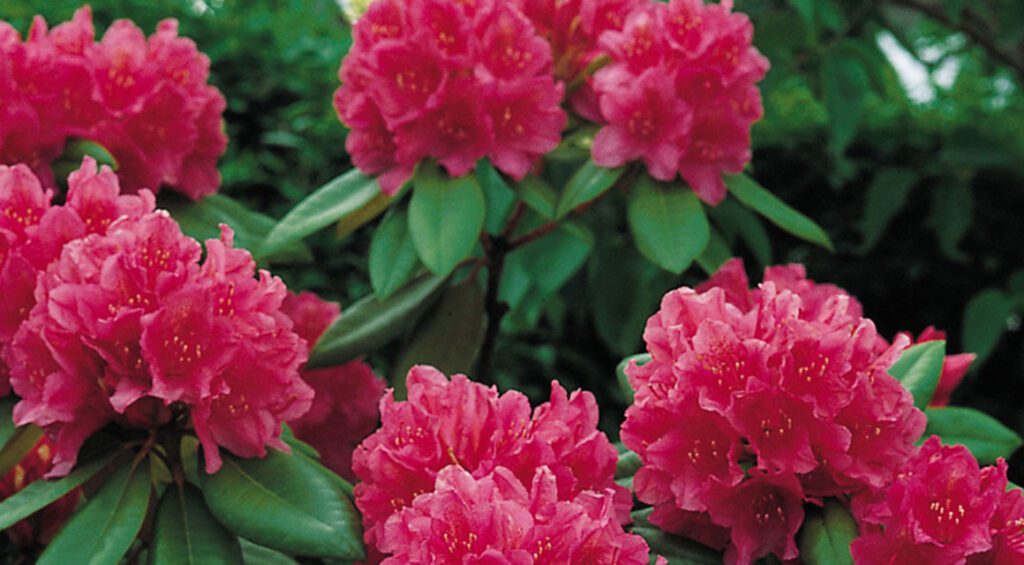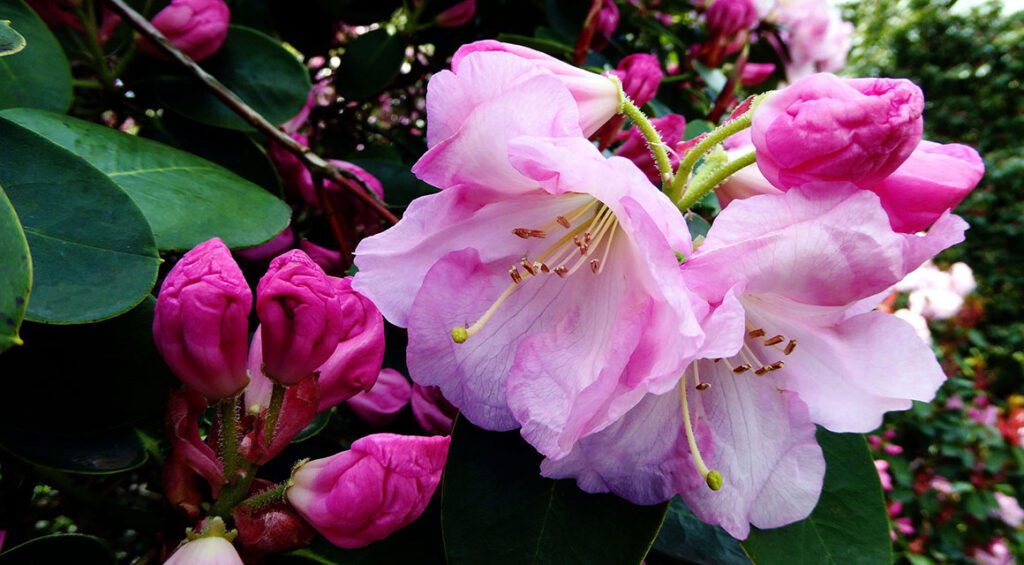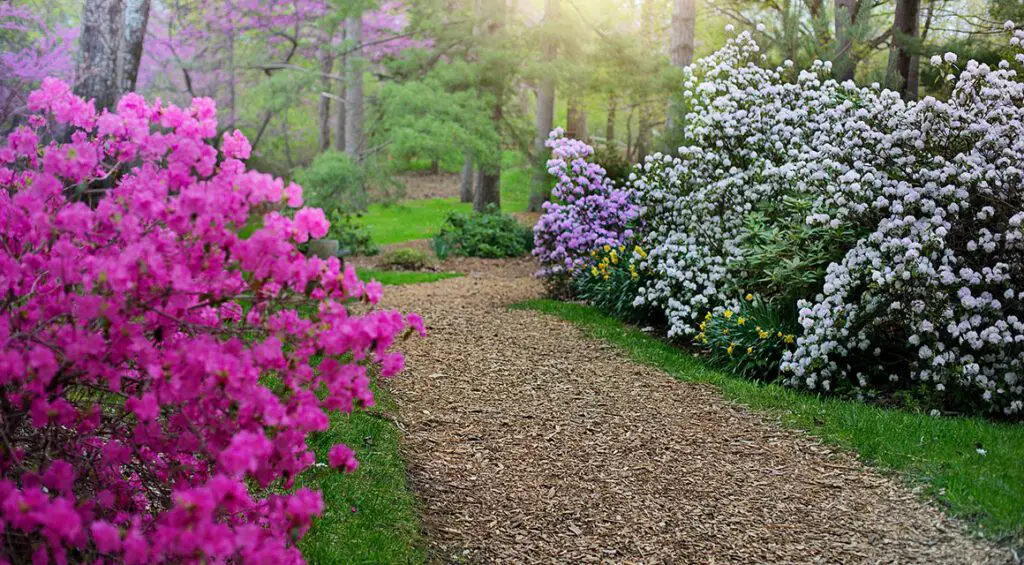Yes, you can use rhododendrons as hedge plants, and they can make for a beautiful and vibrant hedge. Rhododendrons are known for their attractive, evergreen foliage and stunning, showy blooms, making them a popular choice for ornamental hedges. Here’s what you need to know about using rhododendrons as hedge plants:
Contents
Advantages of Rhododendron Hedges:
- Aesthetic Appeal: Rhododendrons are prized for their eye-catching, colorful flowers, which come in various shades, including pink, purple, red, white, and more. They can add a burst of color to your landscape when in bloom.
- Evergreen Foliage: Rhododendrons typically have dense, dark green, glossy leaves that provide year-round interest and privacy, even when they’re not in bloom.
- Low Maintenance: Rhododendrons are relatively low-maintenance once established. They require minimal pruning, making them a convenient choice for hedges.
- Wildlife Attraction: The nectar-rich flowers of rhododendrons can attract pollinators like bees and butterflies to your garden.
Considerations for Rhododendron Hedges:
- Site Selection: Rhododendrons prefer filtered sunlight or partial shade, so choose a location that provides the right amount of light. They also require well-draining soil with good organic matter content.
- Spacing: When planting rhododendrons as a hedge, consider the mature size of the particular rhododron species or variety you’re using. Space them accordingly to allow for healthy growth and air circulation. Typically, spacing of about 3 to 5 feet (0.9 to 1.5 meters) between plants is suitable for creating a dense hedge.
- Soil Preparation: Prepare the planting area by amending the soil with organic matter, such as compost, to improve drainage and fertility.
- Watering: Rhododendrons require consistent moisture, especially during dry periods. Adequate and regular watering is essential, particularly during the establishment phase.
- Mulching: Apply a layer of organic mulch, such as pine bark or wood chips, around the base of the plants to help conserve soil moisture and suppress weeds.
- Pruning: Prune your rhododendron hedge to maintain its shape and size as needed. This is best done after the flowering period, typically in late spring or early summer.
- Pest and Disease Management: Keep an eye out for common pests and diseases that can affect rhododendrons, such as lace bugs and root rot. Early detection and appropriate treatment are crucial to maintaining the health of your hedge.
- Fertilization: Rhododendrons benefit from occasional fertilization with a balanced, slow-release fertilizer specifically formulated for acid-loving plants.
Varieties of Rhododendrons for Hedges:
Several rhododendron varieties are suitable for hedges. Some popular choices include:
- Rhododendron catawbiense: Known for its vibrant purple blooms and cold hardiness.
- Rhododendron ‘PJM’: A compact variety with lavender-pink flowers and excellent winter hardiness.
- Rhododendron ‘Nova Zembla’: Features bright red flowers and is a reliable performer.
- Rhododendron ‘Yakushimanum’: A dwarf variety with smaller, attractive foliage and pink or white flowers.
Before planting rhododendrons as a hedge, consider your local climate and growing conditions to select the most appropriate varieties for your area. Proper care and maintenance will help ensure your rhododendron hedge remains healthy, vibrant, and a standout feature in your garden.
Evergreen spring beauty
Rhododendron is a versatile plant you can bring into your garden. This evergreen shrub blooms in spring with lush colorful flowers. It’s a stylish way to add more color to your garden. Many hedge plants that feature lush blooms are deciduous. Because rhododendron is evergreen and retains its foliage, it adds a green touch to your garden year-round. Rhododendrons can be planted individually as specimen trees, or they can be planted as hedges. A rhododendron hedge will provide a green screen in your garden all year round. In this way, it is quite easy to create a hedge with a classic look.
Different varieties of rhododendrons have different flowering periods. If you combine different varieties, you will get a varied hedge that will bear flowers for a long time: you can then enjoy the rhododendron’s flowering splendor from April to June. Of course, you can also plant a rhododendron hedge with only two colors, each alternating in the hedge. You have a free choice when it comes to combining colors. See what suits your garden style and what color suits your taste. Rhododendron shrubs are great for formal, as well as less severe garden styles. This makes the shrub versatile.

What kind of rhododendron are there?
In our webshop we have several varieties of rhododendrons. All varieties have dark green leaves that provide a beautiful background and contrast to the colorful flowers. Rhododendron flower colors vary from white and ivory to various shades of pink and purple. The flowers of the rhododendron ‘Horizon-Monarch’ are yellow. There are twelve different rhododendron varieties in our web store. Take your time and have a look at our different varieties and choose exactly the ones that best suit your garden.
One of the most popular rhododendron varieties is ‘Marcel Menard’, which features a beautiful dark purple flower. Do you prefer a lighter shade? In that case, the rhododendron ‘Catawbiense Grandiflorum’ is a good choice. Varieties with pink flowers include the rhododendron ‘Europeania’, ‘Virginia Richards’ and ‘Scintillation’. The flowers of the rhododendron ‘Red Jack’ and ‘Nova Zembla’ have an intense red color. Do you prefer white or ivory flowers? Then choose rhododendron ‘Cunninghams White’, ‘Gomer Waterer’ or ‘Madame Masson’.

Pruning and care of rhododendron hedge
A rhododendron hedge is easy to maintain. If the shrub is not pruned, the result is a charming, free-growing hedge. Do you prefer a more compact hedge with a classic appearance? Then trim the hedge when it has faded. For this, it is best to choose a cloudy day when it looks like rain. This way you reduce the risk of losing too much moisture at the intersections. Always use clean, sharp pruning tools when cutting rhododendrons. Pruning after flowering stimulates the formation of new buds and branches.
This not only gives the hedge a more compact appearance, but also helps it bloom more profusely the next year. Fertilizing your rhododendron hedge is best done with organic fertilizer. Fertilizing is an important part of rhododendron care. Rhododendrons like acidic soils, so keep this in mind when choosing fertilizer. Special rhododendron fertilizer is available in stores that will make your hedge thrive especially well. Rhododendron develops best in well-drained, humus-rich, slightly moist soil.
Most rhododendron varieties are hardy. Some varieties, such as Rhododendron ‘Red Jack’ and ‘Virginia Richards’, can only withstand temperatures as low as minus 10 degrees. These varieties are therefore rather unsuitable for cold or very windy locations.



